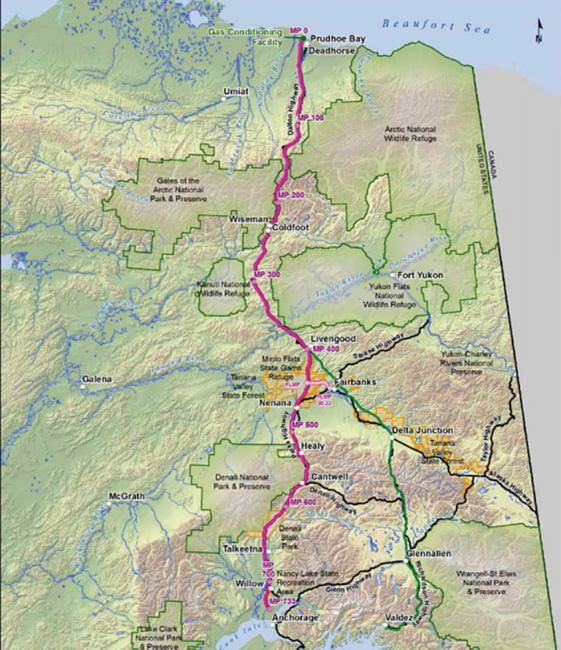
A federal agency is asking for input on an in-state natural gas pipeline.
The Alaska Standalone Pipeline would bring gas from the North Slope to Wasilla. It’s designed to deliver gas to communities like Fairbanks and throughout Southcentral Alaska.
The Army Corps of Engineers is the lead agency working on an Environmental Impact Statement for the gasline project — a requirement for the National Environmental Policy Act.
The current version of the statement — released in June — is updated from a 2012 version. It covers things like environmental consequences of the project footprint, transporting the gas, new access roads and the 13 construction camps needed to build it.
The Corps is focused on the parts of the project that could impact people.
“In case of social economics, you have job growth opportunities. You have employment. On the flip side, you have more stress for government support facilities or at local clinics, at hospitals, etc,” said Sandy Gibson, the gas pipeline project manager for the Army Corps in Alaska.
The project is managed by the Alaska Gasline Development Corporation which is also tasked with developing a similar, but larger gas pipeline that would bring gas from the North Slope into Cook Inlet and then sell it overseas. The corporation calls the in-state pipeline, a backup project if it doesn’t get the larger pipeline built.
Gibson said people sometimes confuse the two projects.
“It seems that, in the last couple of decades there’s been some type of a pipeline project that has evolved into another revised project,” Gibson said. “So I think that a lot of people here in Alaska have a history with pipeline projects in general.”
This summer, a team from the Corps has traveled around the state holding meetings in places like Utqiaġvik, Nuiqsut, Wiseman and Anchorage, updating people on the environmental review process.
So far, Gibson said they’ve heard a lot of concern about its potential effects on subsistence.
“One of the comments made that there was concern about caribou migration and that it wasn’t necessarily due to the pipeline being elevated, but it had more so to do with helicopters flying the length of the pipeline,” she said.
This could be problematic during peak season, when hunters have a short window to bag a caribou and the noise could spook the herd.
The comment deadline is August 14.
Gibson said the goal is to publish a final impact statement at the end of 2018.
But there’s still a long road ahead for Alaska’s in-state gas pipeline.
After it gets an impact statement, the project still needs to get permit decisions from federal agencies like the Corps, to be built.
Gibson said the environmental review and permitting process ideally go hand-in-hand. But finishing the review doesn’t necessarily mean an agency will grant a permit.
